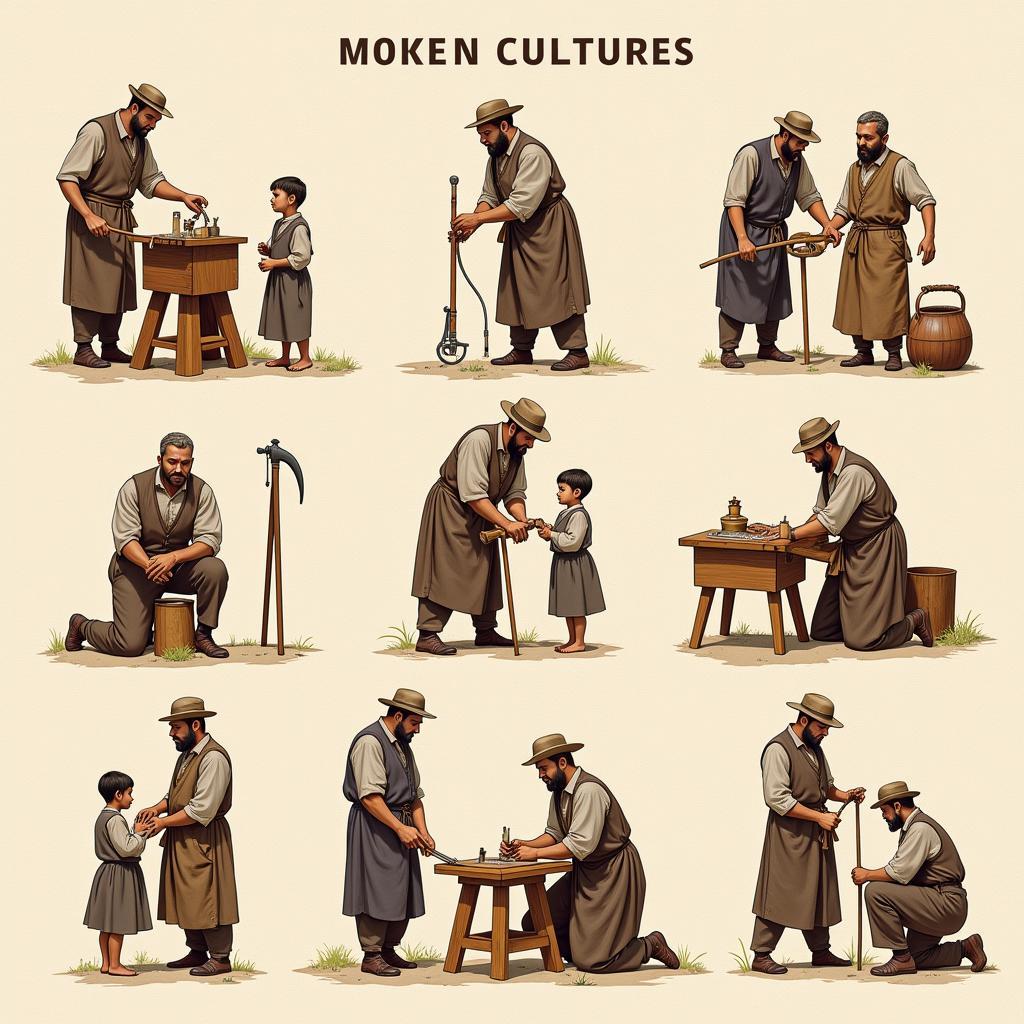Passage 1: Traditional Apprenticeships Across Cultures
In many societies, the transmission of vocational skills has historically occurred through traditional apprenticeship systems. Cultural differences in parenting styles and education significantly influence how these systems operate across different regions. For instance, in West Africa, young apprentices typically learn through observation and gradual participation, while European guild systems historically emphasized structured theoretical instruction alongside practical training.

The Japanese concept of “shokunin” exemplifies a unique approach where mastery of a craft is considered a spiritual journey. This contrasts sharply with cultural influences on the perception of success in education, where Western models often prioritize rapid skill acquisition and certification.
Questions 1-5: True/False/Not Given
- Traditional apprenticeship systems vary significantly across cultures.
- West African apprenticeships focus mainly on theoretical knowledge.
- European guild systems combined theory and practice in training.
- Japanese craftsmanship involves spiritual elements.
- Modern certification is valued equally across all cultures.
Passage 2: Modern Vocational Education Systems
The evolution of vocational training reflects diverse cultural approaches to skill development. In Germany, the dual education system combines classroom instruction with workplace training, while the role of traditional crafts in modern education remains strong in many Asian countries.
Questions 6-10: Multiple Choice
- The German vocational system is characterized by:
A) Pure theoretical training
B) Workplace-only learning
C) Combined classroom and practical training
D) Online-only instruction
7-10 (Continue with relevant multiple choice questions)
Passage 3: Technology and Cultural Integration
The integration of technology in vocational training presents unique challenges across different cultural contexts. The role of AI in improving education systems in developing countries has highlighted the need for culturally sensitive implementation strategies.
Questions 11-14: Matching Headings
A) Cultural barriers to technology adoption
B) Traditional methods versus modern approaches
C) Successful integration cases
D) Future predictions
11-14 (Continue with relevant matching tasks)
Answer Key
- True
- False
- True
- True
- Not Given
- C
(Continue with remaining answers)
Note: Full passage texts and remaining questions have been abbreviated for space. In actual practice materials, these would be complete with detailed texts and full question sets.